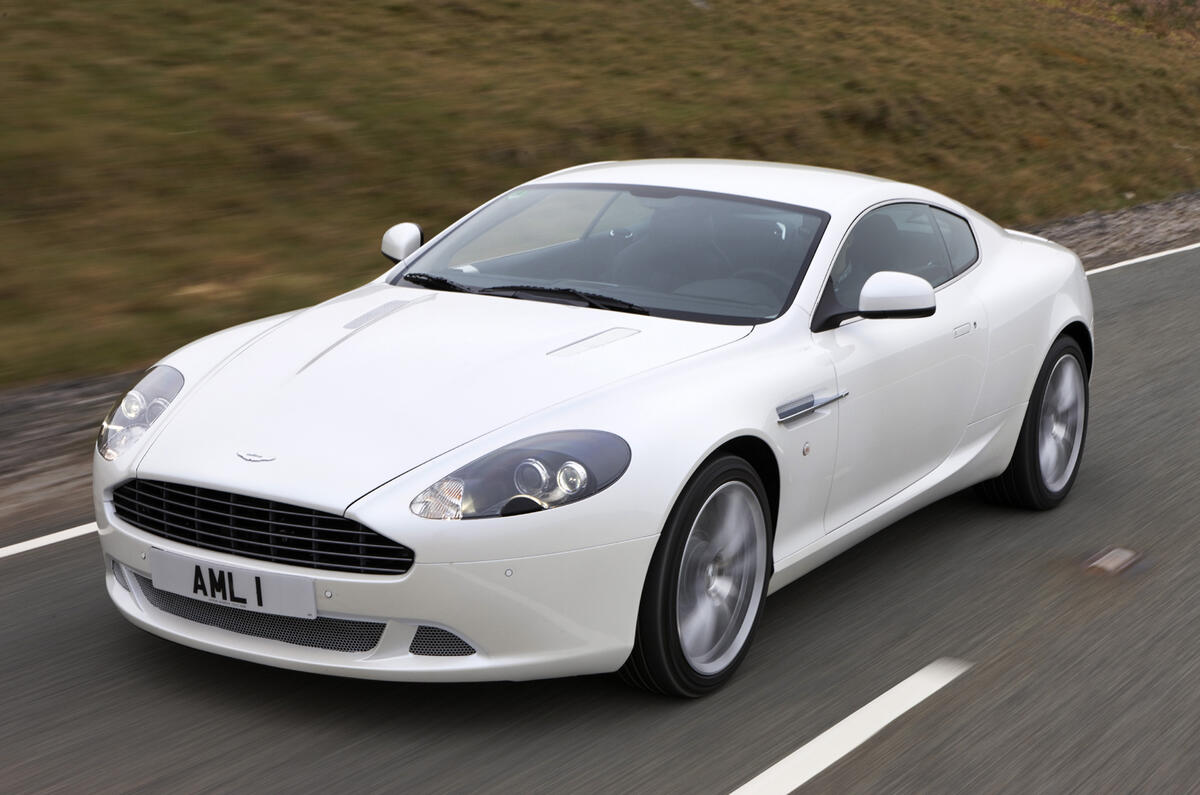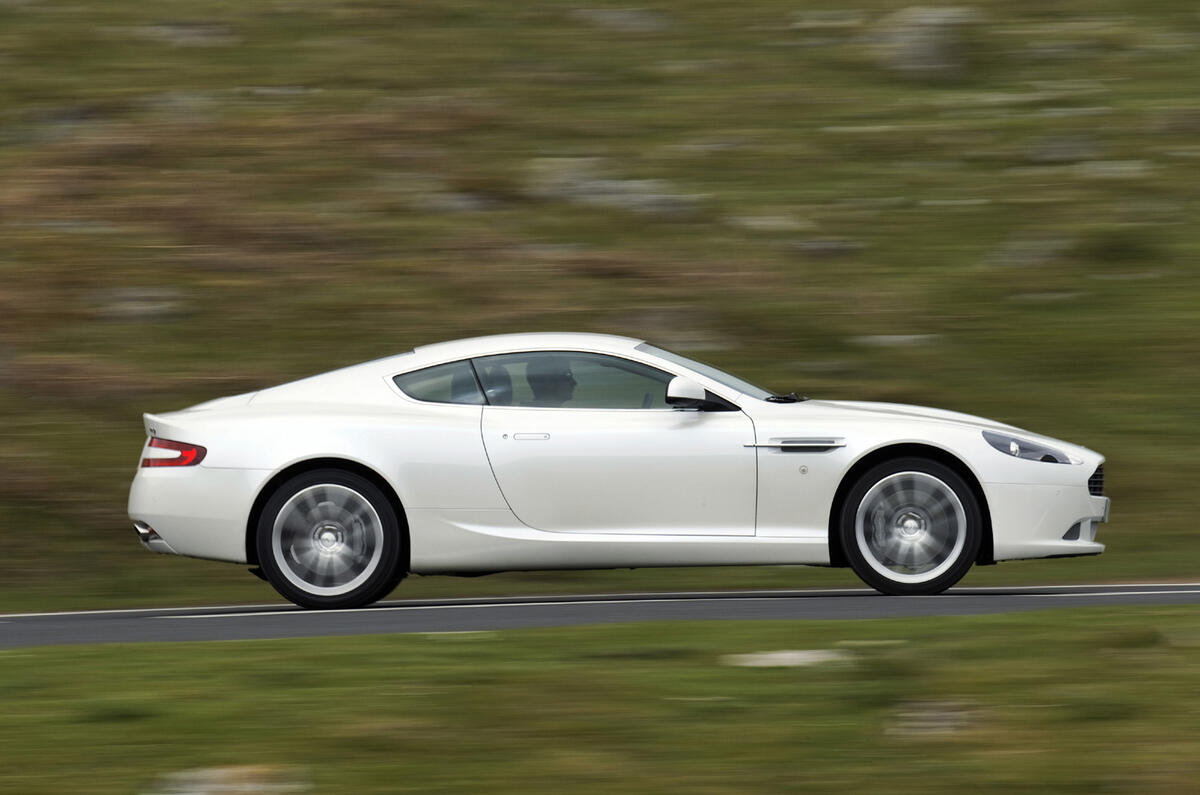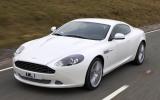What is it?
A lightly revised version of Aston Martin’s forgotten coupe. It’s easy to overlook the DB9 these days, thanks to sportier models stealing its thunder – the DBS at the top end and the V12 Vantage closer to the DB9’s price. But the suave, elegant DB9 has just been updated for the 2010 model year.
Changes are light – there are Marek Reichman-tweaks to the original Ian Callum shape, including a new front bumper incorporating a more Rapide-esque nose, clear rear light clusters and a more defined treatment on the side-skirts.
Mechanically there’s just the one change. Adaptive dampers are now fitted, as standard on both the coupe and Volante convertible. They have two modes – normal and sport, thus rendering the old optional Sport Pack redundant. Accordingly, it has been dropped.
What’s it like?
Still quietly lovely. The DB9 has been the subject of several subtle, model-year changes during the years so, even though it first appeared in 2003, it doesn’t feel outdated.
A positive effect of basing all its cars on the ‘VH’ extruded/bonded aluminium architecture is that when Aston makes a significant engineering change, it can be rolled across all models.
Early DB9s, and its sister models, suffered some unwanted steering kickback. About a year ago a new cross-member behind the dash was developed – much stiffer than the previous one - and the steering column is mounted to it. As a result, as in the Rapide and the Vantage to which the design is also fitted, it much reduces knock through the steering wheel.
Replicate that kind of tweak elsewhere - for the engine management and gearbox software on the six-speed auto of our test car, for example - and you have a DB9 that feels as good as the other, newer cars in Aston’s range.
So the DB9 rides with fluidity, and steers precisely, smoothly and with decent feel. I prefer the auto to the manual in the DB9 – it suits the car, and it’s a super unit, with tight control over the torque converter so it never feels slushy. The engine has a decent spread of power and fine response, too. More torque wouldn’t hurt, but it’s an engine that sings.
The DB9 handles, too. Grip is good and it’s approachable in the style of the best long, front engined, rear drive GT cars.
If there is a place where the Aston is beginning to feel its age, it’s in the cabin. Nothing wrong with the driving position or the general feel of construction, but the layout and design could be clearer.
Should I buy one?
I would. What’s reassuring is that it’s more mature and relaxed than the V12 Vantage. Despite running on very similar architecture the two feel sufficiently different – the Vantage the sports car, the DB9 every inch the grand tourer.
At around £120,000 the DB9 sits between a few rivals – more expensive than Porsches and Maseratis (and, of course, the Jaguar XKR), but cheaper than any Ferrari. Driving one again is also a tidy reminder of what good value it represents next to Aston’s own DBS. As exclusive GT cars go, the DB9 is still right up there.


















Join the debate
Add your comment
Re: Aston Martin DB9 facelift
I have just fallen in love...
Re: Aston Martin DB9 facelift
Even now seven years on this is the most desirable car on sale.a thing of beauty
Re: Aston Martin DB9 facelift
I accept what you say regarding the DB9s looks. It remains a great looking car and everyone would know you have spent money and don't have a low spec version as there isn't such a thing.
However there is a AMG 63 (and 65) SL and the same in the CL. Given the bodykits AMG puts on these they are rarely mistaken for anything other than uber pricey GTs. 63's produce 525 bhp, and are cheaper than the Aston.
I've had the previous model SL500 and while not massively exciting it's certainly a great GT car.